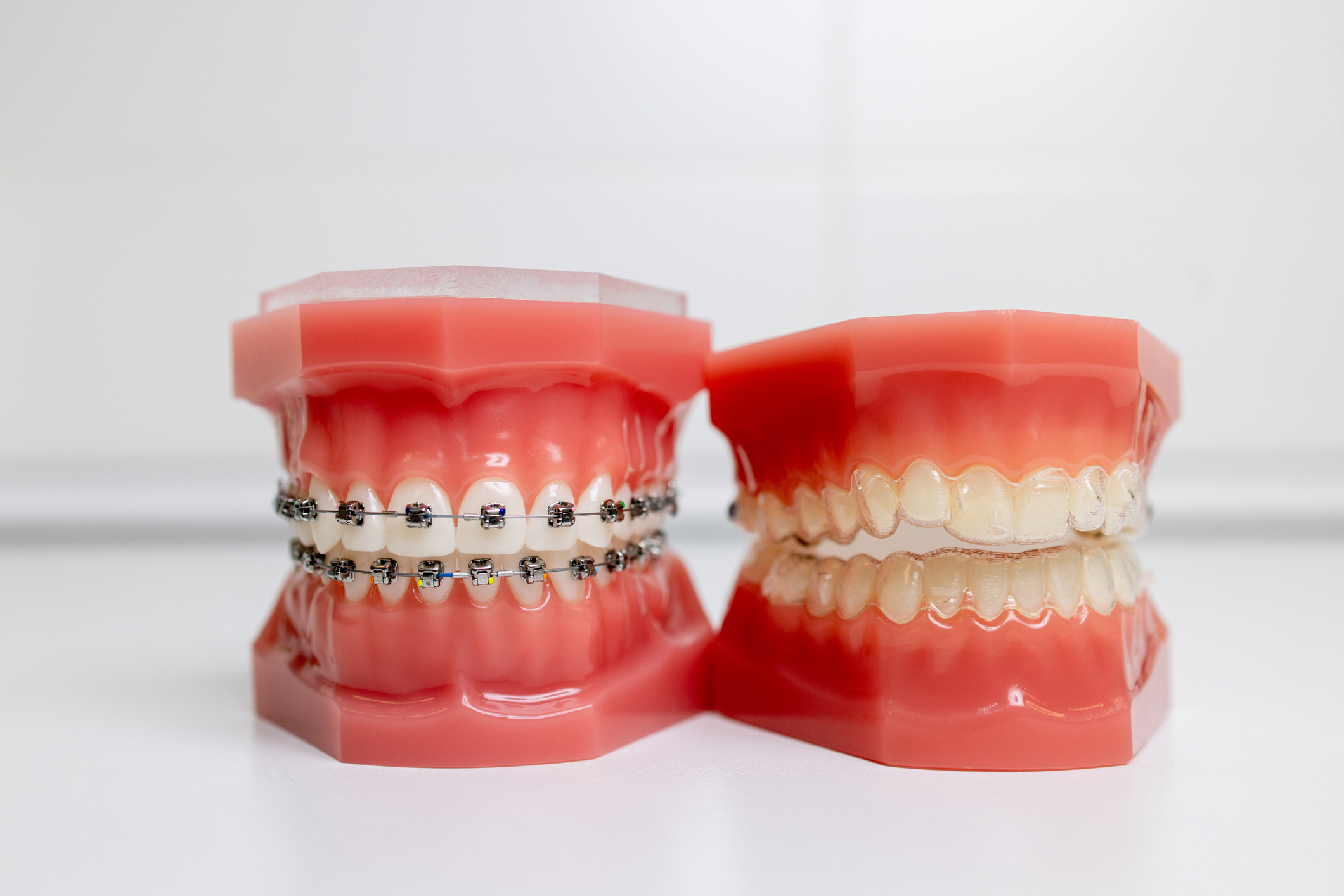When it comes to straightening your teeth, both clear aligners and traditional braces can deliver excellent results. However, each option comes with its own set of benefits and limitations. The right choice often depends on your individual needs, lifestyle, and orthodontic goals. This comparison can help you better understand the pros and cons of each treatment type before making a decision.
Appearance
One of the most noticeable differences between clear aligners and traditional braces is how they look. Clear aligners are virtually invisible and made from transparent plastic, making them a popular option for teens and adults who want a more discreet treatment. Traditional braces, on the other hand, consist of metal brackets and wires that are more visible, although options like ceramic braces can offer a less noticeable alternative.
Comfort and Fit
Clear aligners are generally considered more comfortable than braces since they’re smooth and custom-molded to your teeth. There are no wires or brackets to potentially irritate your cheeks or gums. However, aligners can cause temporary discomfort or pressure when switching to a new set. Braces may take more time to get used to and can sometimes cause soreness or irritation after adjustments.
Removability and Flexibility
Clear aligners can be removed when eating, drinking, brushing, and flossing, which allows for greater flexibility and helps maintain oral hygiene. However, because they must be worn 20 to 22 hours a day to be effective, they require discipline and commitment. Traditional braces are fixed in place and cannot be removed, which means there’s no risk of forgetting to wear them, but they can make brushing and flossing more challenging.
Treatment Scope
Traditional braces are often more effective for complex dental issues, including significant crowding, severe bite misalignment, and tooth rotation. They offer more control over individual tooth movement. Clear aligners work well for mild to moderate alignment issues and are continuously evolving to address more complex cases. However, certain cases may still be better suited to traditional braces.
Maintenance and Cleaning
Since clear aligners are removable, maintaining good oral hygiene is often easier. You can brush and floss as you normally would, and the aligners themselves can be cleaned separately. Braces require more care, especially when it comes to removing food particles around brackets and wires. Special tools like floss threaders and interdental brushes are often recommended for those with braces.
Treatment Time and Follow-Ups
The length of treatment can vary with both options, depending on the complexity of your case and how closely you follow your provider’s instructions. Clear aligner treatment often involves fewer office visits, as new trays can sometimes be provided in advance. Braces typically require more frequent in-office adjustments. However, treatment times for both can be comparable when the patient follows the plan properly.
Cost Considerations
The cost of clear aligners and traditional braces can be similar, although this can vary depending on the provider, the length of treatment, and the specific needs of the patient. Insurance coverage may also differ between the two, so it’s a good idea to review your options in advance and discuss financing with your dental provider.
Choosing the Right Option for You
Ultimately, the best orthodontic treatment depends on your dental condition, goals, and lifestyle. Both clear aligners and traditional braces offer unique benefits, and the right choice varies from person to person. At The Dental Office Encino, we offer clear aligner therapy in-office, providing a convenient and discreet option for patients looking to straighten their smile without traditional braces.
If you have questions or want to explore your options, schedule a complimentary consultation today—we’re here to help you make the best choice for your smile.




